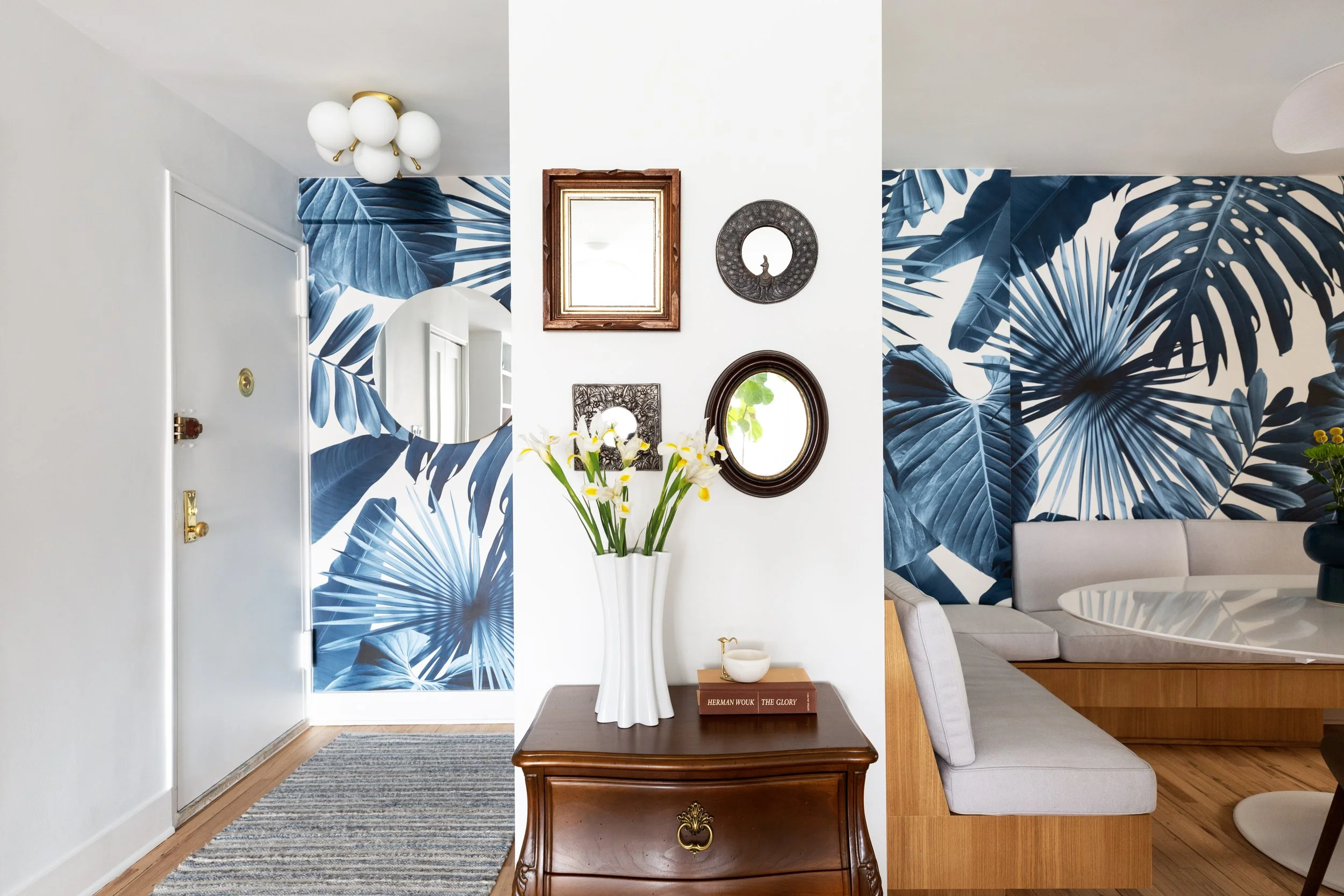Embracing Nature Within: The Essence of Biophilic Design
In her latest book, The Well-Gardened Mind: The Restorative Power of Nature, Sue Stuart-Smith argues that “our increasingly urbanized and technology-dependent lifestyles make it more important than ever to rediscover a closer relationship with the earth.”
It is a fact that in our fast-paced modern world, there's a growing recognition of the profound impact that nature has on our well-being. To that I will pose a challenge: how can you rekindle that essential nature-connection if you live in a city, don’t have a garden, you kill every plant you ever buy, and your daily life revolves around work, or family, or both, with no time (or simply no strength) for a nature hike, or forest bathing and the like?
Enter: Biophilic Design.
Biophilic design emerges as a remedy, inviting nature back into our built environments, reconnecting us with our innate affinity for the natural world. But what exactly is biophilic design, and how can it transform our spaces and lives?
Understanding Biophilic Design
At its core, biophilic design is about fostering a deep connection with nature within the built environment. It goes beyond merely adding a few plants or pictures of landscapes; it's about integrating natural elements and processes into the very fabric of our surroundings.
Basic Principles of Biophilic Design:
Nature Analogues: Incorporating direct representations of nature, such as using natural materials like wood or stone, or mimicking natural forms and patterns in design elements.
Natural Light and Air: Maximizing access to natural light and ventilation, which not only reduces reliance on artificial lighting and HVAC systems but also creates a more dynamic and healthier indoor environment.
Biomorphic Forms and Patterns: Introducing organic shapes and patterns into the design, reminiscent of natural forms like leaves, branches, or flowing water, which evoke a sense of tranquility and harmony.
Natural Systems Integration: Incorporating elements like green walls, living roofs, or water features that emulate natural ecosystems, fostering biodiversity and promoting ecological sustainability.
Prospect and Refuge: Balancing spaces that offer expansive views (prospect) with those providing a sense of shelter and security (refuge), catering to our inherent need for both exploration and safety.
Sensory Engagement: Stimulating multiple senses through the use of natural materials, textures, scents, and sounds, enhancing our connection with the environment on a visceral level.
“Our understanding of nature and its restorative powers is just beginning to flower”
Benefits for Well-being:
The benefits of biophilic design extend far beyond mere aesthetics. Research has shown that integrating nature into our surroundings can have profound effects on our physical, mental, and emotional well-being:
Stress Reduction: Exposure to natural elements has been linked to reduced stress levels, lower blood pressure, and improved overall mood.
Enhanced Cognitive Function: Access to natural light and views has been shown to boost productivity, creativity, and concentration, while also aiding in faster recovery times in healthcare settings.
Improved Air Quality: Incorporating plants and natural ventilation systems can help purify indoor air, reducing pollutants and allergens, and promoting better respiratory health.
Increased Biophilia: By nurturing our innate connection to nature, biophilic design fosters a greater appreciation for the natural world, leading to more sustainable lifestyles and behaviors.
Greenwich Village Duplex by Sova Studio
Brooklyn Residence by Sova Studio
The Wonder Loft by Sova Studio
Integrating Biophilic Design Into Any Interior:
Embracing biophilic design doesn't have to be daunting. Here are some simple yet effective ways to incorporate its principles into any space:
Bring in Plants: Introduce a variety of indoor plants, ranging from small potted herbs to large statement trees, to add greenery and improve air quality.
Maximize Natural Light: Remove heavy curtains or blinds, and opt for sheer fabrics or no window coverings at all to allow natural light to flood the space.
Use Natural Materials: Choose furnishings and finishes made from wood, stone, bamboo, or cork to add warmth and texture while reducing reliance on synthetic materials.
Create Views to Nature: Position furniture or workspaces near windows with views of greenery or natural landscapes to provide visual connections to the outdoors.
Incorporate Water Features: Install indoor fountains, aquariums, or even tabletop water gardens to introduce the soothing sights and sounds of water into the environment.
Embrace Biophilic Art: Decorate walls with nature-inspired artwork or photography depicting landscapes, flora, and fauna to evoke a sense of connection with the natural world.
By embracing biophilic design principles and integrating them thoughtfully into our interiors, we can create spaces that not only look beautiful but also nurture our well-being and deepen our connection with the world around us. So let's embark on this journey of rediscovery, where nature becomes not just a visitor but an integral part of our daily lives.










